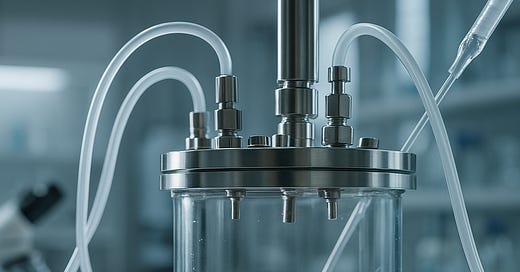Lab-Grown Protein Hits Restaurant Menus And Will You Serve It?
Lab-Grown Protein Hits Restaurant Menus And Will You Serve It?
Imagine a steak that never wandered a field. A salmon that never knew the sea. This is lab-grown protein. It is real meat grown from cells in tanks. While cultivated meat avoids slaughter for production, initial cell sourcing may involve minor procedures.
A chef orders cultured chicken. It arrives on ice. The menu reads cultivated protein. Guests ask tough questions. We have answers.
What is lab-grown protein, and how is it made, in simple terms? Scientists take a tiny sample of cells from a healthy animal or egg. They place the cells in a tank with nutrient broth and warmth. The cells grow in layers that become muscle and fat. Scaffolds made from edible gels shape the texture⁹. In days or weeks, the tissue is ready to harvest.
The health case is strong. Cultivated meat can be designed with less saturated fat and extra omega-3s. It is free of antibiotics and added hormones. It is grown in sterile labs, so E coli and Salmonella are nearly impossible. Long-term studies are underway.
Risks still loom. Early tests used animal serum, which raises ethical questions. Most companies now use plant-based or recombinant alternatives¹⁰. Some cell lines are altered to multiply forever, and we need more safety data¹¹. Regulatory bodies require rigorous testing to ensure safety.
Novel allergens could emerge. While no cases have been observed yet, the FDA and FAO recommend ongoing allergen testing to address potential risks¹².
Cost is falling fast. The first lab-grown burger cost over $325,000 in 2013¹. Today, firms report prices of $6 to $17 per pound². High-end kitchens pay $350 per kilo for cultured foie gras³. New methods cut growth media costs to sixty-three cents per liter⁴. Industry experts say ground products could match farm prices by 2030⁸.
Will diners bite? A 2024 survey found that 27% of adults know about cultivated meat⁵, 36% of Millennials, and 32% of Gen Z would try a free sample. Studies show nearly half of guests would pay more for protein that helps the planet⁷. Perception hinges on chef stories and tasting events.
Regulators are on board. The FDA approved lab-grown salmon in 2025⁶, now on menus in Portland. The USDA cleared chicken from two leading firms in 2024⁶. Labels read “cultivated” or “cell cultured” under new rules.
Cultivated meat can reduce land use by up to 90% and emissions by over 80% when powered by renewables¹³.
This is a turning point for restaurants. Early adopters will earn headlines, loyalty, and a green badge. You can own the story, educate guests, and lock in eco-minded diners.
Some U.S. states and countries like Italy have banned or restricted cultivated meat sales.
Will your kitchen be among the pioneers? The tanks are full. The time is now.
#LabGrownMeat #CultivatedProtein #RestaurantInnovation #Sustainability #FutureOfDining
Footnotes
The first lab-grown burger cost 325,000 dollars. New Harvest, 2013.
Cultivated meat costs drop to 6–17 dollars per pound. Good Food Institute, 2025.
Cultured foie gras at 350 dollars per kilo. Le Figaro, 2025.
Media cost reduction to 0.63 dollars per liter. Upside Foods press release, 2025.
Good Food Institute and Morning Consult survey, 2024.
FDA and USDA approvals for cultivated salmon and chicken. FDA News Release, 2025; USDA release, 2024.
Willingness to pay a premium for sustainable protein. National Restaurant Association, 2024.
Price parity by 2030 prediction. AgFunder Insights, 2024.
Scaffolding and texture formation in cultivated meat. Longevity Technology, 2023.
Serum-free media and recombinant alternatives. Good Food Institute, 2025.
Immortalized cell lines and safety concerns. Expert Market Research, 2024.
FAO/WHO guidelines on allergen testing. FAO/WHO Joint Report, 2023.
Environmental impact reductions. Expert Market Research, 2024; Gittemary, 2022.




